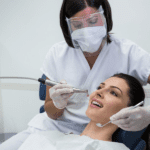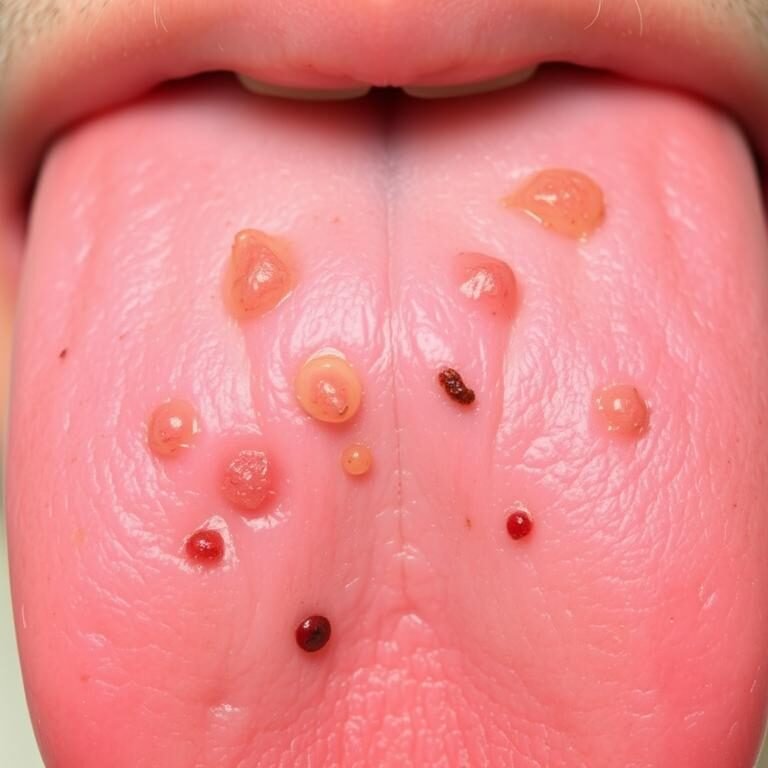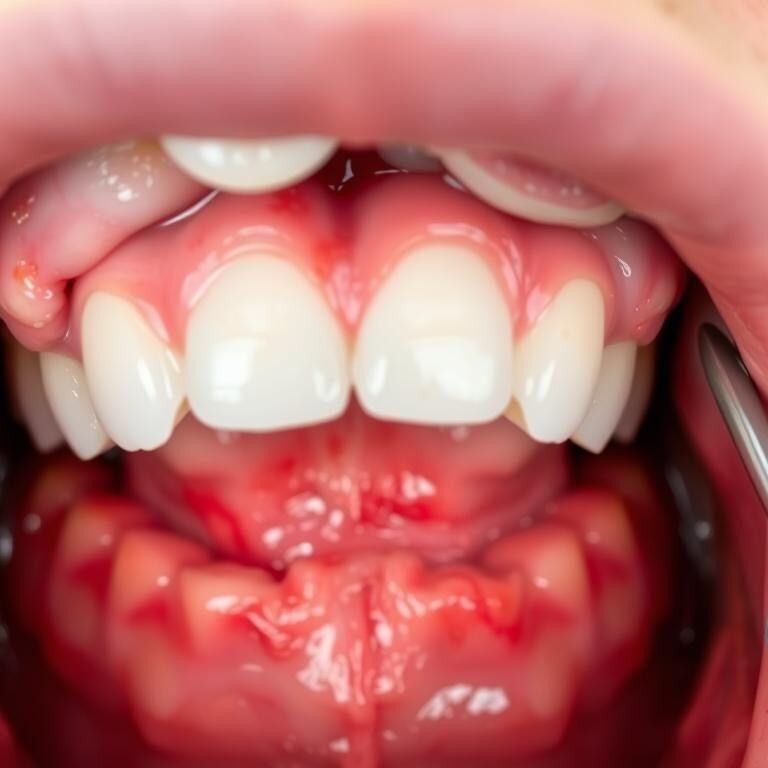Table of Contents
Understanding the Importance of Regular Dental Exams
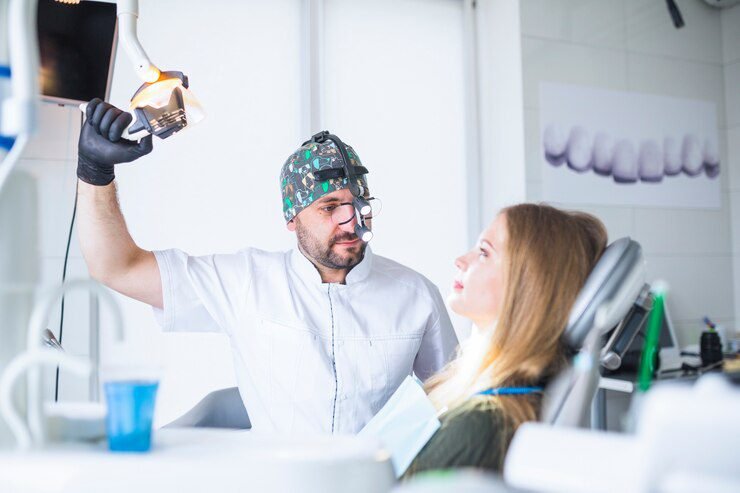
Regular dental exams are a crucial aspect of maintaining optimal oral health. These exams allow dentists to assess the condition of your teeth, gums, and overall oral cavity, enabling them to identify any potential issues at their early stages. By catching problems early on, dental exams can help prevent more serious dental issues from developing in the future.
During a dental exam, your dentist will carefully evaluate the health of your teeth and gums. They will check for any signs of decay, cavities, or gum disease, which, if left untreated, can lead to more extensive and costly dental work down the road. The exam may also include x-rays, providing a comprehensive view of your oral health and aiding in the identification of hidden dental issues.
By scheduling and attending regular dental exams, you are taking proactive steps towards maintaining a healthy smile. Not only do these exams allow for the early detection and treatment of any dental issues, but they also provide an opportunity for your dentist to educate you on proper dental hygiene practices and offer recommendations specific to your needs. So, make sure to prioritize regular dental exams to keep your oral health in check and maintain a bright and healthy smile.
The Role of Dental Exams in Preventive Dentistry
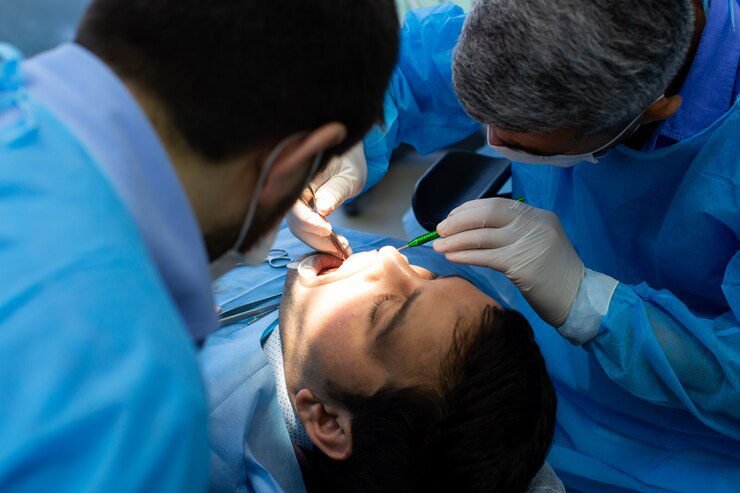
Regular dental exams play a crucial role in preventive dentistry by helping to maintain and improve oral health. These exams provide an opportunity for dentists to assess the overall condition of the teeth, gums, and other oral structures, and to detect any potential issues before they become more serious.
During a dental exam, the dentist will thoroughly examine the mouth, looking for signs of tooth decay, cavities, gum disease, and other oral health problems. They will also evaluate the alignment of the bite and assess the condition of any existing dental restorations. In addition, X-rays may be taken to get a more comprehensive view of the oral structures, allowing the dentist to identify potential issues that may not be visible to the naked eye.
By detecting any oral health problems early on, dental exams help to prevent the development of more serious conditions that may require extensive treatment. This is particularly important for issues such as tooth decay and gum disease, which, if left untreated, can lead to tooth loss and significant damage to the gums and supporting structures. Regular dental exams not only help to maintain good oral health but also contribute to overall well-being, as research has shown that poor oral health can be linked to various systemic health conditions.
Identifying Early Signs of Dental Issues through Examinations
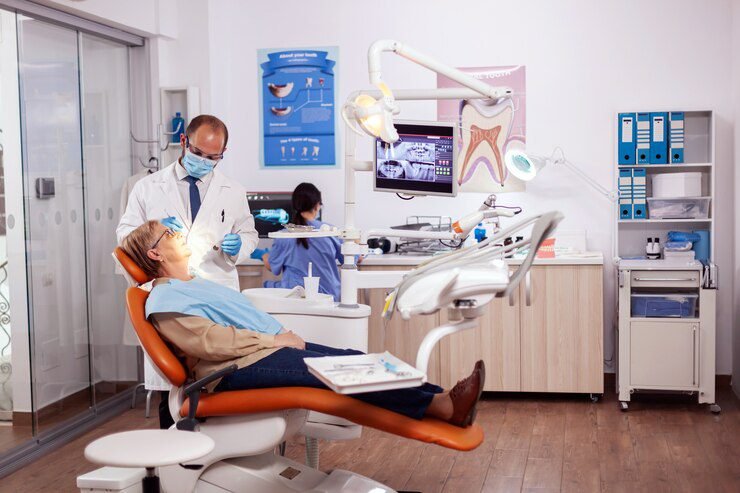
Regular dental exams play a crucial role in identifying early signs of dental issues. These comprehensive examinations allow dentists to thoroughly assess the oral health of their patients, catching potential problems before they become more serious or expensive to treat. By conducting regular exams, dentists can detect signs of tooth decay, gum disease, oral cancer, and other oral health problems in their early stages.
During a dental exam, the dentist will carefully examine the teeth, gums, and soft tissues of the mouth. They will look for signs of decay, such as cavities or dark spots on the teeth. They will also check for any abnormalities or irregularities in the gums, as well as signs of gum disease, such as redness, swelling, or bleeding. By closely monitoring the oral health of their patients, dentists can intervene early on, implementing appropriate treatment plans to prevent further deterioration.
In addition to visual examination, dental exams may also involve X-rays. These diagnostic images provide dentists with a more comprehensive view of the teeth, enabling them to identify hidden dental issues, such as impacted teeth, bone loss, or infections. X-rays are particularly useful in detecting early signs of decay between the teeth or beneath existing dental restorations. With the information obtained from X-rays, dentists can develop personalized treatment plans tailored to the specific needs of each patient, ensuring optimal oral health.
By regularly attending dental exams, individuals can significantly reduce the risk of dental problems and maintain a healthy smile. With early detection of oral issues, dentists can intervene promptly, preventing further damage and potentially costly treatments. Understanding the importance of identifying early signs of dental issues through examinations empowers individuals to take control of their oral health and proactively address any potential problems.
The Step-by-Step Process of a Dental Exam
During a dental exam, your dentist will carefully evaluate the overall health of your teeth and gums. The process begins with a thorough examination of your mouth, where your dentist will visually inspect your teeth, gums, tongue, and other soft tissues. This helps them identify any signs of tooth decay, gum disease, or oral abnormalities. They may also use dental instruments, such as a mirror or probe, to get a closer look at specific areas.
Next, your dentist may take X-rays of your teeth and jaw. This allows them to assess the condition of your teeth below the gum line and detect any hidden issues, such as impacted teeth or hidden decay. X-rays are an essential tool in providing a comprehensive dental exam and can help your dentist develop an accurate treatment plan.
Afterward, your dentist will check the condition of any existing dental restorations, such as fillings, crowns, or bridges. They will assess their stability and make sure they are functioning properly. Additionally, your dentist will examine your bite to ensure proper alignment, as an uneven bite can lead to various dental problems, including tooth wear or TMJ disorders.
Evaluating the Health of Your Teeth and Gums during a Dental Exam
During a dental exam, your dentist will carefully evaluate the health of your teeth and gums. This assessment is crucial for identifying any potential issues and developing an appropriate treatment plan. The evaluation process involves several steps, ensuring a comprehensive examination of your oral health.
Firstly, your dentist will visually inspect your teeth and gums, looking for signs of decay, gum disease, or other abnormalities. They will use a dental mirror and probe to examine the condition of each tooth, checking for cavities, chips, or cracks. Additionally, they will assess the overall gum health, looking for any redness, swelling, or bleeding.
Next, your dentist may use dental X-rays to get a more detailed view of your teeth and jaw structure. X-rays can reveal hidden issues such as tooth decay between teeth, gum disease below the gumline, or bone loss. These images provide valuable information that may not be visible during a visual examination alone.
In the final stages of the evaluation, your dentist will assess the alignment of your bite. They will observe how your upper and lower teeth come together, looking for any misalignments or issues with your jaw joints. This step is essential as an improper bite can lead to dental problems such as tooth wear, chipping, or even temporomandibular joint (TMJ) disorders.
Overall, evaluating the health of your teeth and gums during a dental exam is a crucial aspect of preventive dentistry. Regular exams allow your dentist to catch any issues early on, preventing further damage and ensuring long-term oral health. By detecting problems promptly and providing appropriate treatment, your dentist plays a crucial role in maintaining a healthy smile.
How X-Rays Contribute to a Comprehensive Dental Exam
X-rays play a crucial role in conducting a comprehensive dental exam. These diagnostic images provide valuable insights that cannot be obtained through visual examination alone. By using X-rays, dentists are able to detect any hidden dental issues, such as cavities between teeth, impacted teeth, or infections in the jawbone.
X-rays contribute to a comprehensive dental exam by allowing dentists to assess the overall health of the teeth and supporting structures. They provide a detailed view of the teeth, roots, and jawbone, enabling dentists to identify any abnormalities or complications. Additionally, X-rays help dentists determine the best course of treatment by revealing the extent of decay or damage, which may not be otherwise visible. This allows for timely intervention and prevents the progression of dental problems. With the information obtained from X-rays, dentists can develop personalized treatment plans and provide the most appropriate care for their patients’ dental needs.
Assessing the Condition of Existing Dental Restorations
Dental restorations play a crucial role in maintaining oral health and function. They are designed to restore the structure and integrity of teeth that have been damaged or lost due to decay, trauma, or other factors. Assessing the condition of existing dental restorations is an important part of a comprehensive dental exam, as it helps to identify any issues or potential problems that may need to be addressed.
During the examination, your dentist will closely examine each restoration, looking for signs of wear, deterioration, or damage. This includes examining the margins of fillings or crowns to ensure a proper fit and seal, checking for signs of chipping or cracking, and evaluating the overall stability and longevity of the restoration. Additionally, your dentist will assess the surrounding teeth and gum tissues to ensure that the restoration is functioning harmoniously with the rest of your oral cavity.
Regular assessment of existing dental restorations is vital for maintaining their longevity and functionality. A deteriorating or faulty restoration can lead to further oral health issues, such as tooth sensitivity, bacterial infection, or even tooth loss. By identifying any problems early on, your dentist can recommend appropriate treatment options or adjustments to help prolong the lifespan of your restorations and prevent potential complications. Remember, it is always best to address any concerns or issues with your dental restorations promptly to ensure optimal oral health and a beautiful smile.
Checking for Signs of Tooth Decay and Cavities
During a dental exam, one of the key areas that your dentist will focus on is checking for signs of tooth decay and cavities. This is an essential part of preventive dentistry, as catching decay in its early stages is crucial for maintaining optimal oral health.
To assess for tooth decay, your dentist will perform a visual examination of your teeth, looking for any visible signs of cavities. They may also use dental instruments to gently probe the surfaces of your teeth, checking for areas that feel soft or sticky, which could indicate the presence of decay.
In addition to the visual examination, your dentist may also take X-rays to get a more comprehensive view of your teeth. X-rays can help identify cavities that may not be immediately visible, especially in between the teeth or beneath existing dental restorations. This allows your dentist to catch decay in these hidden areas and address it before it progresses and causes more serious oral health issues.
Regular dental exams that include checking for signs of tooth decay and cavities are an essential component of maintaining a healthy smile. By detecting and treating decay early, your dentist can help preserve the strength and integrity of your teeth, ensuring that you can enjoy a lifetime of optimal oral health.
The table below outlines common signs of tooth decay and cavities, aiding in early detection and prompt intervention to prevent further dental issues.
| Signs of Tooth Decay and Cavities | Description |
|---|---|
| Tooth Sensitivity | Increased sensitivity to hot, cold, sweet, or acidic foods and drinks may indicate tooth decay or cavities. Enamel erosion and exposure of the underlying dentin can lead to sensitivity when the tooth comes into contact with temperature or sugary substances. |
| Tooth Pain or Discomfort | Persistent toothache or discomfort, especially when chewing or applying pressure to the affected tooth, can be a sign of tooth decay or cavities. Pain may vary in intensity and duration, ranging from mild discomfort to severe throbbing pain, depending on the extent of decay and involvement of the tooth nerve. |
| Visible Holes or Pits in Teeth | The presence of visible holes, pits, or dark spots on the surface of the teeth may indicate tooth decay or cavities. Cavities often start as small, white or brown spots on the enamel and progress to larger holes or pits as decay advances and undermines the tooth structure. |
| Discoloration or Dark Spots | Discoloration or dark spots on the surface of the teeth, particularly black or brown stains, can be signs of tooth decay. Decay-related discoloration may occur as the enamel breaks down and bacteria infiltrate the tooth, leading to visible changes in color or hue. |
| Sensitivity to Sugary Foods | Increased sensitivity or discomfort when consuming sugary foods or beverages may signal tooth decay or cavities. Bacteria in the mouth feed on sugars and produce acid, which can weaken enamel and contribute to decay. Individuals with cavities may experience heightened sensitivity or pain in response to sugar intake. |
| Bad Breath or Unpleasant Taste | Persistent bad breath (halitosis) or an unpleasant taste in the mouth, despite proper oral hygiene practices, can be indicative of tooth decay or cavities. Bacteria feeding on food particles and plaque produce foul-smelling compounds, contributing to bad breath and an unpleasant taste in the mouth. |
| Gum Recession or Swelling | Gum recession or swelling around a tooth may occur as a result of advanced tooth decay or cavities. Decay can weaken the tooth structure and lead to gum irritation or inflammation. In severe cases, cavities may extend into the tooth root, causing gum recession, swelling, or tenderness in the surrounding tissues. |
| Prolonged Sensitivity after Treatment | Persistent sensitivity or discomfort after dental treatment, such as fillings or restorations, may indicate unresolved tooth decay or cavities. If sensitivity persists or worsens following treatment, it may be a sign of underlying issues, such as recurrent decay or inadequate restoration placement. Follow-up evaluation by a dentist is recommended to address the underlying cause. |
Examining the Health and Alignment of Your Bite
During a dental exam, one crucial aspect that your dentist will evaluate is the health and alignment of your bite. A proper bite, also known as occlusion, refers to the way your upper and lower teeth come together when you close your mouth. It plays a significant role in maintaining good oral health and overall well-being.
An improper bite can lead to a range of dental issues, such as tooth wear, jaw pain, headaches, and even difficulty in speaking or chewing. To assess the health and alignment of your bite, your dentist will perform a thorough examination, looking for any signs of misalignment, malocclusion, or abnormalities. They may use various techniques, such as observing how your teeth fit together, assessing the position of your jaws, and evaluating the wear patterns on your teeth. This examination is crucial in identifying any problems early on and developing a suitable treatment plan to restore proper alignment and prevent further complications.
Detecting Signs of Gum Disease and Assessing Gum Health
Gum disease, also known as periodontal disease, is a common oral health condition that affects the gums and supporting structures of the teeth. Detecting signs of gum disease and assessing gum health is an important aspect of regular dental exams.
During a dental exam, your dentist will carefully examine your gums for any indications of gum disease. This involves checking for symptoms such as redness, swelling, tenderness, and bleeding. Additionally, your dentist will evaluate the depth of the spaces between your gums and teeth, known as pocket depths. Deeper pocket depths can be a sign of gum disease, as they provide a breeding ground for harmful bacteria.
Assessing gum health also involves evaluating the attachment level of your gums to the teeth. Healthy gums should firmly and tightly surround the teeth, forming a protective seal. Any signs of gum recession or detachment can indicate gum disease. Your dentist may also use a special instrument to measure the amount of gum tissue that has receded, which helps in determining the severity of the condition. By detecting signs of gum disease early, your dentist can take necessary measures to prevent its progression and maintain your overall oral health.
Oral Cancer Screening during Dental Exams
During a dental exam, one crucial aspect that is often included is an oral cancer screening. Oral cancer is a serious condition that affects millions of people worldwide. According to the American Cancer Society, an estimated 54,010 new cases of oral cancer will be diagnosed in the United States alone in 2021.
The purpose of an oral cancer screening is to detect any abnormal growths or precancerous lesions in the mouth. This screening is typically done by visually examining the mouth, lips, tongue, and throat for any signs of concern. The dentist will also feel the tissues in these areas to check for any lumps or irregularities. Early detection of oral cancer is vital, as it greatly increases the chances of successful treatment and recovery.
Overall, an oral cancer screening is a vital component of a comprehensive dental exam. Dentists are trained to identify the signs and symptoms of oral cancer, and by including this screening in regular dental check-ups, individuals can take proactive steps towards their oral health and potentially catch any issues at an early stage. In the next section, we will explore another important aspect of dental exams – evaluating the functionality of your jaw joints.
Evaluating the Functionality of Your Jaw Joints
The functionality of your jaw joints, also known as the temporomandibular joints (TMJ), is crucial for proper chewing, speaking, and overall oral functionality. During a dental exam, your dentist will evaluate the functionality of your jaw joints to ensure they are working properly and not causing any pain or discomfort.
One of the primary ways dentists evaluate the functionality of your jaw joints is through a series of simple tests and observations. They will observe your jaw movement, looking for any signs of clicking, popping, or deviation. They will also assess the range of motion of your jaw, checking for any limitations or restrictions. These tests help your dentist identify any potential issues with your TMJ, such as temporomandibular joint disorder (TMD), which can cause pain, headaches, and difficulty in opening and closing your mouth.
Additionally, your dentist may use additional diagnostic tools, such as imaging studies or digital scans, to get a clearer picture of your jaw joints. These images can help identify any structural abnormalities or joint disorders that may not be evident during the initial observation. Understanding the functionality of your jaw joints is essential for diagnosing and treating any underlying issues and ensuring optimal oral health and comfort.
Assessing the Condition of Your Tongue, Throat, and Soft Tissues
During a comprehensive dental exam, your dentist will not only assess the condition of your teeth and gums, but also examine the health of your tongue, throat, and soft tissues. This is an important part of the examination as it can help in the early detection of any abnormalities or potential issues.
The tongue, throat, and soft tissues play a crucial role in overall oral health. Your dentist will carefully inspect these areas for signs of inflammation, lesions, discoloration, or any other abnormalities. They will also assess the texture and feel of the tissues, as changes in texture can sometimes indicate underlying health concerns. By thoroughly examining these areas, your dentist can identify any potential oral health issues, such as oral thrush, fungal infections, or even oral cancer, and provide appropriate treatment or referrals if necessary.
It is important to remember that regular dental exams are not limited to just the teeth and gums, but encompass a comprehensive evaluation of your oral health. By assessing the condition of your tongue, throat, and soft tissues, your dentist aims to ensure the overall well-being of your mouth and detect any potential problems at an early stage, allowing for prompt and effective treatment.
Discussing Dental Hygiene Practices and Offering Recommendations
Good dental hygiene practices are crucial for maintaining optimal oral health. During your dental exam, your dentist will discuss these practices with you and offer recommendations tailored to your specific needs. One of the key aspects of dental hygiene is brushing your teeth regularly. It is recommended to brush your teeth at least twice a day using a fluoride toothpaste to remove plaque and prevent tooth decay.
In addition to brushing, your dentist will emphasize the importance of flossing. Many people underestimate the significance of flossing, but it is an essential part of dental hygiene. Flossing helps remove plaque and food particles that are stuck between your teeth, preventing the buildup of bacteria and reducing the risk of gum disease.
Your dentist may also discuss the benefits of mouthwash in maintaining good oral hygiene. Mouthwash can help kill bacteria and freshen your breath. However, it is important to note that mouthwash is not a substitute for brushing and flossing but should be used as a complementary step in your dental care routine.
Moreover, your dentist may offer recommendations for other oral hygiene products such as interdental brushes or tongue scrapers, depending on your individual needs. It is essential to follow these recommendations and practice good dental hygiene consistently to preserve the health of your teeth and gums.
Addressing Patient Concerns and Answering Questions during the Exam
During a dental exam, it is important for the dentist to address any concerns or questions that the patient may have. This not only helps to alleviate any anxieties or uncertainties, but it also allows the dentist to provide the patient with the necessary information and guidance for maintaining good oral health.
When addressing patient concerns, the dentist should listen attentively and show empathy towards their worries or fears. By creating a safe and welcoming environment, the patient may feel more comfortable in discussing their concerns openly. The dentist should then provide clear and concise explanations, using professional and scientific language, to address each concern thoroughly. It is essential for the dentist to present the information in a manner that the patient can easily understand, using visual aids or diagrams if necessary.
In addition to addressing concerns, the dentist should also be prepared to answer any questions that the patient may have during the exam. Patients may have queries regarding their oral hygiene routine, dietary habits, or potential treatment options. The dentist should provide accurate and evidence-based answers, using their expertise and knowledge to guide the patient towards making informed decisions about their oral health. It is important for the dentist to remain approachable and patient, ensuring that the patient feels comfortable asking any questions they may have.
The Importance of Regular Follow-up Dental Exams for Long-term Oral Health.
Regular follow-up dental exams are an essential component of maintaining long-term oral health. These exams play a vital role in detecting and preventing dental issues before they become more serious and costly to treat. By consistently attending dental check-ups, individuals can proactively address any oral health concerns and ensure that their teeth and gums remain in optimal condition.
During these regular exams, dentists thoroughly evaluate the health of both the teeth and gums. They assess the condition of existing dental restorations, such as fillings or crowns, to ensure they are still functioning properly. Additionally, dentists check for signs of tooth decay and cavities, which, if left untreated, can lead to more extensive dental problems. The alignment of the bite is also examined, as a misaligned bite can result in issues such as jaw pain or difficulty chewing. Furthermore, dentists assess the health of the gums, looking for signs of gum disease, which, if left untreated, can lead to tooth loss and other systemic health problems. By addressing these issues early on, individuals can receive the necessary treatments and take preventive measures to maintain their oral health for years to come.
In summary, regular follow-up dental exams are crucial for long-term oral health. By identifying and treating dental issues early on, individuals can prevent more extensive and costly dental procedures in the future. With the help of a dental professional, individuals can proactively care for their oral health and enjoy a confident and healthy smile.
How often should I schedule regular dental exams?
It is recommended to schedule regular dental exams every six months. However, your dentist may advise more frequent visits based on your individual oral health needs.
Are dental exams only important for adults?
No, dental exams are essential for individuals of all ages, including children. Early dental exams help monitor oral development and address any potential issues before they become more serious.
What happens during a dental exam?
A dental exam typically includes a thorough examination of your teeth, gums, and mouth, checking for signs of tooth decay, gum disease, and other oral health problems. X-rays, oral cancer screenings, and bite assessments may also be conducted.
Can dental exams detect early signs of gum disease?
Yes, dental exams play a vital role in detecting early signs of gum disease such as swollen or bleeding gums. Regular exams allow for timely intervention and treatment to prevent the progression of gum disease.
How often are X-rays taken during a dental exam?
The frequency of X-rays depends on your oral health condition and risk factors. Usually, X-rays are taken every 1 to 2 years unless there is a specific need for more frequent imaging.
Can dental exams detect oral cancer?
Yes, oral cancer screenings are typically performed during dental exams. Dentists check for any abnormal tissue changes, growths, or suspicious lesions in the mouth, throat, tongue, and other soft tissues.
What is the importance of examining dental restorations during a dental exam?
Examining dental restorations allows dentists to assess their condition, identify any signs of deterioration or damage, and determine if they need to be repaired or replaced.
Will the dentist discuss dental hygiene practices during the exam?
Yes, dentists often discuss dental hygiene practices during exams. They may provide recommendations on proper brushing and flossing techniques, as well as suggest additional oral care products if needed.
Can I address my concerns or ask questions during the dental exam?
Yes, dental exams provide an opportunity for patients to address their concerns and ask questions. Dentists are there to provide information, clarify doubts, and offer guidance regarding your oral health.
How do regular follow-up dental exams contribute to long-term oral health?
Regular follow-up dental exams help in the early detection and prevention of oral health issues. By addressing problems in their initial stages, dental exams contribute to maintaining healthy teeth, gums, and overall oral health in the long run.


